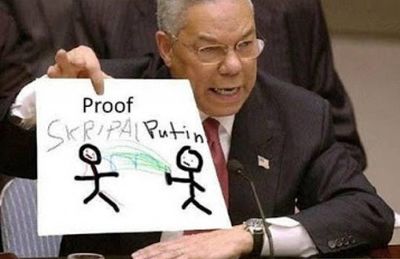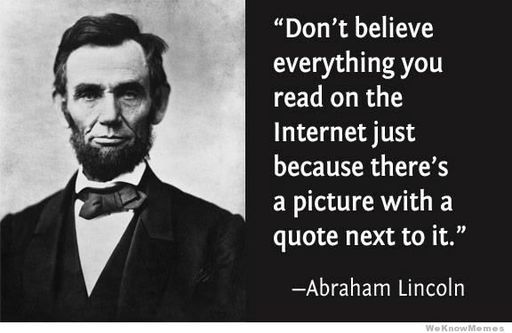Wikispooks:Style Guide

The golden rule of writing is to keep the reader in mind. On the internet, this is easier said than done, since the reader could be anybody. As this is a wiki, feel free to experiment and try a variety of ways to get your points across. The below guidelines which should help keep your contributions focused and in alignment with the general direction of Wikispooks.
Contents
- 1 Collaborate
- 2 Avoid repetition
- 3 Encyclopedic Style
- 4 Wikispooks Specifics
- 5 References
Collaborate
Remember that this is a wiki, so be courteous and be aware that other editors will edit your contributions. Be ready to return the favour by developing articles which others are working on as the mood takes you, dropping in a link to another article or giving some extra piece of information. All of us are smarter than any of us, and it's always encouraging to see ones work improved upon by fellow editors. Don't get hung up on matters technical - if you need help with syntax, just ask and someone will pitch in to advise or improve your work. Critical thinking and assembling of information is more important than presentation.
Avoid repetition
Repeating material from elsewhere on the web is a fast way to add content, but Wikispooks has a strong preference for quality over quantity. Material which has been lifted from elsewhere is off-putting to serious researchers who will recognize it from their earlier research. Repeating chunks of material from one Wikispooks page elsewhere on the site is not only off-putting but also confusing. Instead, think which page the material most logically belongs on and link there from other pages, perhaps using Template:FA, generally but not exclusively at the top of a subsection. Wikipedia can be a good source, but has its problems, so be selective in importing from Wikipedia. Linking to material often makes for a more readable article than repeating it.
Familiarise yourself with the template parameters[1] and use them whenever possible, since this not only displays data in a helpfully predictable place, but also creates in-links to the page from other pages. Try to avoid repeating this information elsewhere on the page.[2]
Encyclopedic Style
If you're a regular Wikipedia user, you're probably already familiar with encyclopedic style, which applies to all the main: pages (though not the Talk: pages). No use is made of the first or second person ("I", "We" or "You"), content is clearly introduced and structured with well chosen headings and subheadings to help readers quickly locate material of interest, text is written in a flowing style for the sake of those readers who wish to read a whole page at a time. Important information is cited to help readers locate sources for more in depth study.
Names
- Full article: Wikispooks:Standardisation
- Full article: Wikispooks:Standardisation
English has considerable flexibility which it is expeditious to curtail, particularly as regards names of pages, if links are to work correctly. Pagenames should be in the singular (False flag, not False flags). Unless needed to avoid ambiguity, names of people should be devoid of a title (so Muammar Gaddafi, not Colonel Gaddafi). All names of publications, such as books, films or newspapers should be in italics, especially if they are otherwise ambiguous.[3] Some pages, such as the "war on terror" have double quotes around the title (set by the |so_called parameter, which is used to indicate a deceitful turn of phrase) - in this case, the phrase should not be used without the " characters (except inside direct quotations).
References
Citing your sources is an essential way to help readers estimate the creditworthiness or otherwise of an article, so is highly recommended. If an article has references, it will need a section (generally the very last) entitled References - this should have two equals signs (==References==).
Sections and sub-sections
Sections and sub-sections are used to break up the article into sections and to help readers navigate to the content they seek. Where more than one such section exists, the software automatically builds a table of contents at the top of the page. Recommended section titles should be brief and clear. There are no hard and fast rules for how to break a subject down into sections, although too many top level sections is confusing - try to aim for not more than seven, including references and any other automatically generated sections. Chronological order is often but not always helpful.
Standard sections
Reading lots of existing pages is probably the best way to get a feel for how articles are structured. A common first section is "Official narrative" to clarify what the group or person has to say about themself, or what the commercially-controlled media say about an event. Other standard sections are, in approximate order:
- "Background", generally for people, to explain family connections, childhood and first education
- "Career", for people's regular, paid activities
- "Activities", for people's irregular or unpaid activities
- "Connections", often a few sentences about relationships between people and/or groups
- "Cover up", especially popular for events
- "Exposure", especially popular for events or fraudsters
- "Suicide" or "Assassination" for people so affected. In case of uncertainty, use the more guarded "Premature death"
- "Publications", generally used for people
Some articles have a "See also" section, but this is deprecated so try to remove these. Think of alternative ways to structure information, such as relacing a static list of links with references which explain their relevance to the topic at hand.
Links
Hyperlinks are easy to insert (just use pairs of square brackets) and their wide use is encouraged. Most important to hyperlink are words or phrases which the reader is likely to want to know more about. This will typically include names of people, groups, concepts etc. Note however that creating 'circular' links (i.e. links that transition back to the page they came from) leaders to a disappointing user experience, so is not encouraged.
Avoid wikilinks in headings - instead either use the first such mention in the text below, or else use Template:FA just below the section heading. Do try to avoid links that are forwarded back to the same page, since they just waste the readers' time. Also remember that you needn't link in every occurrence of a word or phrase. Linking in the first is the most important (since readers will generally read the page from top to bottom and will probably want to click the first time they come to a particular link). Hyperlinking important words more than once is OK, especially for long pages, but use common sense - multiple links in the same paragraph, for example, would be redundant, and hence distracting since the user only wants to be presented with relevant links.
External links in article text are not recommended. If you wish to make an inline links to an external page, this is a sign that the subject is germane to Wikispooks, so just make a new link. External links are of course highly recommended for citing sources, but these should be in a <ref> tag.
Ledes
Each page should have an opening paragraph (a lede) which gives an overview of the subject. This should in the first sentence repeat the title of the page (and other alternate names of similar importance) in bold.[4] Some people or groups have pseudonyms or other alternate names. In this case, these should also be listed in bold (often in the first sentence) and redirects from them should be created that point to this page.
Clarity
Each page should be a clear, stand alone, item. You can assume an interest in but not necessarily prior knowledge of a topic. Also do not assume that the reader has visited (or will visit) any particular references. Be careful to explain technical terms before you use them, linking to a full article elsewhere if available.
Images
Every object template has an image parameter. These should be unique and representative of the page. Groups and websites) also have a image parameter. Where possible, a current, official logo is preferred. These are used as icons to represent the page, e.g. on the main page. Where no image is available on the internet, an anonymous image (e.g. person.gif: ![]() ) should be used to record this.
) should be used to record this.
Photoshopped images

Do not post an image here if you have doubts about its authenticity unless you clearly explain your doubts. Known spoof or fake images may be used only if you clearly identify them as inauthentic. For examples of how to do this, see the images shown on the left and below.
Relevance
Being a good editor means knowing what to leave out as well as what to put into an article; all material you include should have a clear bearing upon the topic. For example, a letter from person P1 to person P2 that was written in year Y, lead to event E, was about topic T and exemplified phenomenon Q, might be worth a mention on any or all of pages P1, P2, Y, E, T and Q, but this is about the limit - even a reference to it elsewhere would probably be irrelevant and therefore not wanted.
Emphasis
Sometimes you may wish to emphasise a particular word or phrase. Italics are a good way to convey emphasis. Bold is usually best avoided in ordinary text, as it attracts so much attention, though for this reason it is used for the pagename itself and alternative names or abbreviations) in the lede). BLOCK CAPITALS, or <big> - AKIN TO SHOUTING - ARE NOT HELPFUL. Many of the topics on Wikispooks are matters of life and death, about which very strong feelings are to be expected. Nevertheless, please seek out well chosen words to express yourself, rather than resorting to formatting, which has a rapidly diminishing rate of returns.
Focus
The ideal page (and page section) remains focused on its title; while content inevitably touches on a variety of topics, it should be carefully created for a readership primarily interested in the title of the page. If a section gets overly long, consider whether it can naturally be divided up into sub-sections. If a page gets over long, consider moving a larger section or two to its own page, replacing it with a few lines to summarize the material moved, and use template:FA to point to the new page.
Article length
A set of shorter hyperlinked articles is generally much more useful than one very long article. Try to use subpages to split up any page[5] that exceeds 50k bytes[6]. Wikipedia has a good page on article size. In particular, extended quotes from documents are not suitable for Wikispooks articles, which are intended to be a synthesis of multiple opinions. If a document is really that good, add it a separate page. Since there is no restriction on page size in the document: namespace, just post the original in its entirety as a standalone document. You can use |subjects to specify which other pages it appears at in the "Related document(s)" section.
Humour
Humour, particularly in images, does have an established place on this website. However, since this website has international reach and addresses very serious issues, lean towards dry (understated) humour. In particular, avoid puns in page titles and section headings. As usual, try to maintain the existing look and feel of the site.
Language
Language should be short, simple and explicit, not flowery. Generally, avoid the passive voice. If you do not know the subject of an action, you can use the Template:By whom to highlight the fact that important information is missing. Deceptive language such as plastic words or enemy images should only be used inside quote marks and should be avoided where possible. For example, don't refer to the Piazza Fontana bombing as an act of "terrorism", simply call it a bombing.
Quotations
- Full article: Quotation
- Full article: Quotation
Short quotes (from one word up to a lines or two) can be a great way to add tone and give voice to an article. In this case, the simplest way is use of normal ASCII double quotes ("..."), but it is recommended that you use a Template:SMWQ, a semantic quotation template which will allow the quotation to appear on multiple relevant pages at once.
Source URLs and details
If you plan to include a quotation, seek out supporting details such as date and context. Quotes do get changed[7] so do take the time to try to locate a canonical, original source.[8] If the source document is already available on this site in the Document: namespace, use a link to that in preference to an external URL from which it was sourced.
Quote marks (",“,”)
Where the quote itself includes such marks, you may wish to use the alternative slanting quotes (“...”) and/or single quotes ('...') for clarity. Extensive quotes of more than a couple of lines are sometimes useful, in which case use one of the two available Quotation Templates. If you see material quote seems like a quote (for example, if it uses the first person, or context dependent words such as 'today', 'here' etc.) you can flag this problem with Template:Uncertain origin. In page titles, use the normal ASCII quote marks (' or ") rather than more exotic variants.
Redirects
These are a useful way to deal with different names for the same page, so, for example, "Limited Hangout" redirects to "Limited hangout". They also facilitate gradual expansion of the encyclopaedia, so, for example, "Modified limited hangout" has no separate page (yet) so it currently redirects to "Limited hangout". It is good style to redirect to the specific page section ("Limited hangout#Modified limited hangout").
Wikispooks Specifics
While it has plenty of similarities with Wikipedia, Wikispooks also has differences. The most significant is its scepticism towards is the official narratives promoted by the institutions of the powers that be such as the commercially-controlled media.
Non-violent communication
- Full articles: Nonviolent Communication, Enemy images
- Full articles: Nonviolent Communication, Enemy images
Wikispooks should be as non-violent as possible in its communication. Wikispooks editors' loyalty to the truth as they see it means that enemy images or emotive language are unwanted here. Wikispooks articles should be a simple and unadorned review of the historical record. Doubly unhelpful are words such as "terrorism" which are both emotionally charged and very loosely defined,[9] so these words are only suitable for use inside of quotation marks. Be wary of such words in your own contributions to Wikispooks. Add quote marks to such words for indirect quotations, but not for direct quotes (since the whole quote must be in quotation marks anyway).
Official narrative
Many deep political topics have a single official narrative which is widely promulgated through commercially-controlled media such as newspapers, TV and hence Wikipedia. This typically includes a set of correct and widely agreed facts and is a departure point for many who are trying to dig deeper, it is often a good starting point for a page. So, while extensive narration of the official narrative is unwanted, it is often good style to have an "Official Narrative" subsection as the first section of a page which briefly summarises the story promoted by the establishment. This often has a subsection "Problems" which outline some of its shortcomings that are discussed in more detail in the article.
Original documents
- Full article: Wikispooks:Document Editing Rules
- Full article: Wikispooks:Document Editing Rules
Sometimes, you will find a document which would be good to include in its entirety on the site. Copying to Wikispooks is preferred to linking if there is a chance that the link could go dead or be changed (e.g. news stories from commercially-controlled media sources which are sanitized because they accidentally let something slip) or maybe because the original is not yet on WWW (e.g. it is a scan of hardcopy). In this case, post it to a page in the "document:" namespace so it is preserved in its original form.
| Name | description |
|---|---|
| (Main) | This is for ordinary pages, it is not shown |
| Talk | Every main page has an accompanying 'talk' page, for discussions about the page content. |
| Document | For text documents. The content should not be edited. |
| File | For posting other files, such as images or PDFs. |
| Wikispooks | For pages about this project (such as this one). Note that the alias "Project" should be used in preference for greater portability. |
| Help | For help about the software used. |
| User | Every user has their own page which they can use, for example, to introduce themselves |
Namespaces
- Full article: Help:Namespaces
- Full article: Help:Namespaces
The Mediawiki software which runs Wikispooks organises the material into separate sections, called 'namespaces'. This page, Wikispooks:Style guide for example, is in the "Wikispooks:" namespace, used for pages which are about this project. There are a couple of dozen namespaces, but most are not so important. The most important ones are:
Templates
- Full article: Wikispooks:Templates
- Full article: Wikispooks:Templates
The template: namespace is for short programs which make some of the page for you. To invoke templates, begin "{{" and end "}}". For example, the "Full article: Project:Templates" link just above is created by Template:FA, and it the result of the template call: "{{FA|Wikispooks:Templates}}". To see all the available templates, see the templates category.
Quotation templates
There are two ways of marking up blocks of quotations.
The simplest quotation box is template:QB which makes a "Quote Block" (like this). For more important quotes it is better practice to use template:SMWQ ("Semantic Media Wiki Quote") since this this does not only chaneg the appearance but adds semantic data, so that the quote can appear on related pages in the same way that Documents do.
Time references
This site will has few staff to keep content current. As such, time references should be absolute, rather than relative.[10] Avoid use language such as "currently", "2 months ago", "last year" etc. which quickly go out of date. For example, instead of stating that someone is the "current President of Mexico", stating that someone "was made President of Mexico on <whenever>" doesn't become inaccurate.
Where to begin?
- Full article: Wikispooks:To Do
- Full article: Wikispooks:To Do
The 'To Do' section details a number of ways that it is easy to get started. If you begin a new page, you should probably use Template:Stub until it reaches about five lines of text. It is helpful to create a page which offers even one item of important information (or reference) unavailable on Wikipedia.
| ||||||
|
Legacy content
Although some pages in Wikispooks have a "see also" or "External links" section, these are usually the older, poorly maintained sections. Since the upgrade to SMW technology, it is much preferred to avoid this section and instead use appropriate SMW-based methods (e.g. Template:SMWDocs) to link in relevant material. Where a subject is linked in from the text, it is generally better not to add a separate listing under "See also" since this unnecessarily lengthens pages. Where a 3rd party text is important, it is usually better style to cite it as a reference so it appears in the references section. "See also" sections may be helpful in exceptional cases, but other methods of linking in documents are generally to be preferred.
Some pages have hardcoded tables, which is bad style, since it increases the maintenance and is hard to update. Do not start such new lists, but extending existing lists/tables is still acceptable.
References
- ↑ For example, Template:Person
- ↑ Some information however may be helpful, e.g. to create a clear narrative.
- ↑ e.g. Operation Gladio ≠ Operation Gladio
- ↑ If the pagename is an abbreviation, put that first, with the full name in parentheses just after.
- ↑ Note that this does notapply to documents.
- ↑ The page size is listed at the bottom of every page as "Has revisionSize"
- ↑ https://saidit.net/s/WayOfTheBern/comments/hfn/the_whole_aim_of_politics_is_to_keep_the_populace/
- ↑ See Property:Has_sourceURL for a list of sources of existing quotes
- ↑ http://www.unwelcomeguests.net/747
- ↑ Exceptions for particularly important content are fair enough, as long as you keep them up to date :-)







